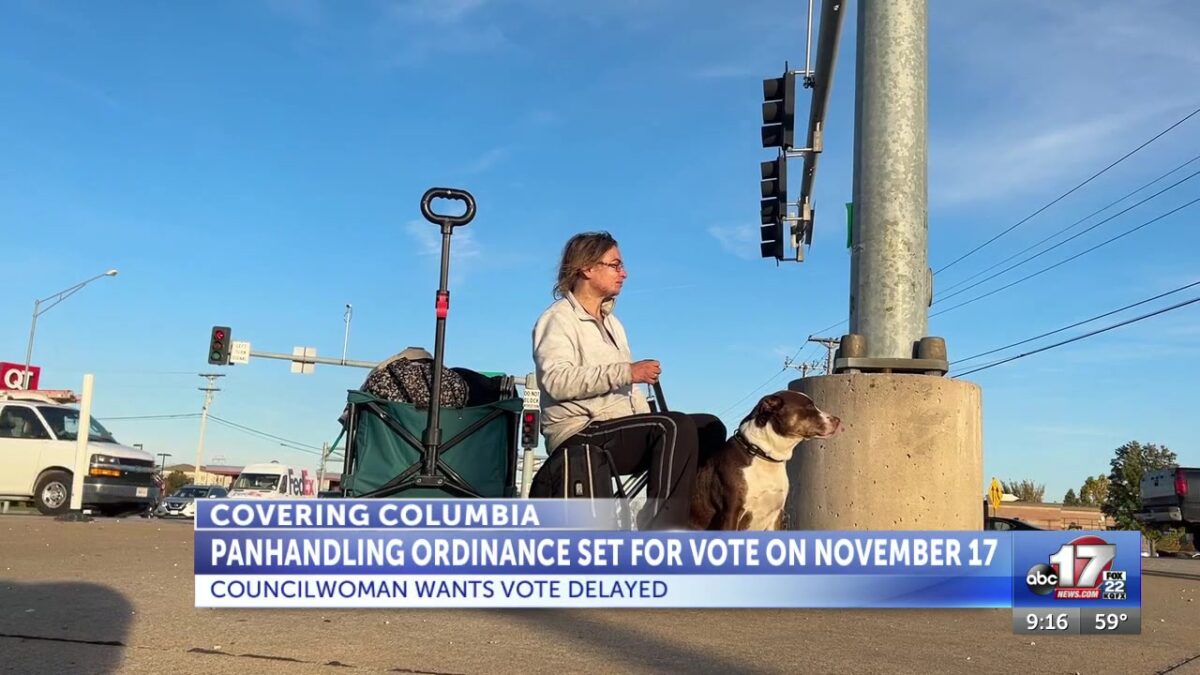Columbia ordinance on median use set for vote; councilwoman seeks delay

Erika McGuire
COLUMBIA, Mo. (KMIZ)
This story was edited to indicate that the ordinance is not directed toward panhandling and to include anyone who is standing on applicable medians.
An ordinance proposed by the City of Columbia that would restrict activity on busy medians and intersections could be up for a vote at the council’s next meeting on Nov. 17, though one council member wants to delay a decision.
The ordinance would regulate the use of medians, road crossings and islands by both motorists and pedestrians at intersections with speeds of 35 mph or greater, average daily traffic volumes of 15,000vehicles or greater, or where the median width is fewer than 6 feet wide.
It was proposed after the city hired George L. Crawford & Associates to conduct a street and intersection safety study. The study identified 47 pedestrian crash areas that meet the criteria.
During Monday’s city council meeting, Ward 3 Councilwoman Jacque Sample requested to hear input from the Human Rights Commission, Disabilities Commission, Public Transit Advisory Commission and the Bicycle/Pedestrian Commission before the council takes the ordinance up for a vote.
“They’re going to each be able to look at it from a different perspective and dig into the ordinance as it relates to the pedestrian safety report that we got and say, ‘yes, this ordinance is meeting the need according to our area,'” Sample said. “I think it’s more eyes on it, by groups of people who were appointed to provide us advice on things just like this.”
The Human Rights Commission introduced the proposed ordinance at its meeting Tuesday night.
Medians often attract homeless people who use them to panhandle, raising one concern Sample has about where those individuals will go next. Some residents worry that panhandling may shift downtown.
“When you move people away from one area, they are going to go to a different area, that’s just that’s how it’s going to happen,” Sample said.
Tina Kruger, who has been homeless for 4 years says the medians are a life-line for the homeless community.
“It’s a place for us to communicate and talk to one another, to check on each other, it’s how we make our money, it’s how some of us get food water, some things that we need,” Kruger said.
However, she says if the ordinance is passed she would avoid downtown.
“I try to stay as far away from downtown as possible because you know were associated as a whole, but a lot of us are not like everyone else,” Kruger added.
If the ordinance is passed, it’s not clear when enforcement would start, but Sample says she would like to see it delayed until the Opportunity Campus, a homeless shelter and resource center, opens in the spring.
“We have potentially several months of engagement, outreach and education of the people who are currently utilizing medians for non-pedestrian things,” Sample said. “It could include signage, it could include whatever that we provide that education for a couple months.”
“We could potentially move that into enforcement maybe once the opportunity campus opens, because then as we are enforcing the ordinance those people have a place to go. There’s more services where they can be referred to and say this is where you need to go,” Sample added.
If the proposed ordinance is passed and enforcement begins, Kruger believes it was lead to more issues in the city.
“It will cause more jail, more fines, more trespassing tickets, things we can’t afford to pay anyways,” Kruger said. “Probably won’t see 90% of those tickets for trespassing or loitering or whatever,”
When asked if this ordinance is more targeted toward the homeless, Sample said she believes that is how the conversation of an ordinance got started.
“The city recognizes that you can’t have anti-panhandling or an anti-loitering ordinance that’s unconstitutional,” she said. “It’s going to be fought in court, and so an attempt was made to address it from a different angle as other cities and municipalities have done.”
The study recommends guiding pedestrians to crosswalks and designated areas to enhance safety. This measure also aligns with the city’s Vision Zero plan, which focuses on safety measures to protect all road users.
If adopted, the ordinance will:
Prohibit crossing a major road anywhere except in a crosswalk, a pedestrian-control signal or an intersection if those things aren’t available.
Prohibit being on a median less than 6 feet wide except when crossing the road.
Prohibit getting out of cars while in a traffic lane or within a major intersection.
Prohibit approaching cars on a major road unless the car is legally parked.
Prohibit people in vehicles from engaging with pedestrians at major intersections.

Sample said more emphasis is needed on pedestrian safety.
“We need accessible crosswalks, we need sidewalks, that’s pedestrian safety. It’s not just about the median. I feel like the way the ordinance is written right now, it’s very focused on the median and who’s occupying and for how long and we need to think broadly,” Sample said.
The study also found that from 2019 to 2023, 32% of deadly crashes in Columbia were pedestrian-related, which is higher than the national and state rates.
In Missouri, pedestrian and bicycle deaths increased by 77% while other traffic fatalities increased by 40% between 2012 and 2022.
The ordinance could come up for a vote on Nov. 17, but Sample plans to request that it be tabled, pushing a vote to a later date.